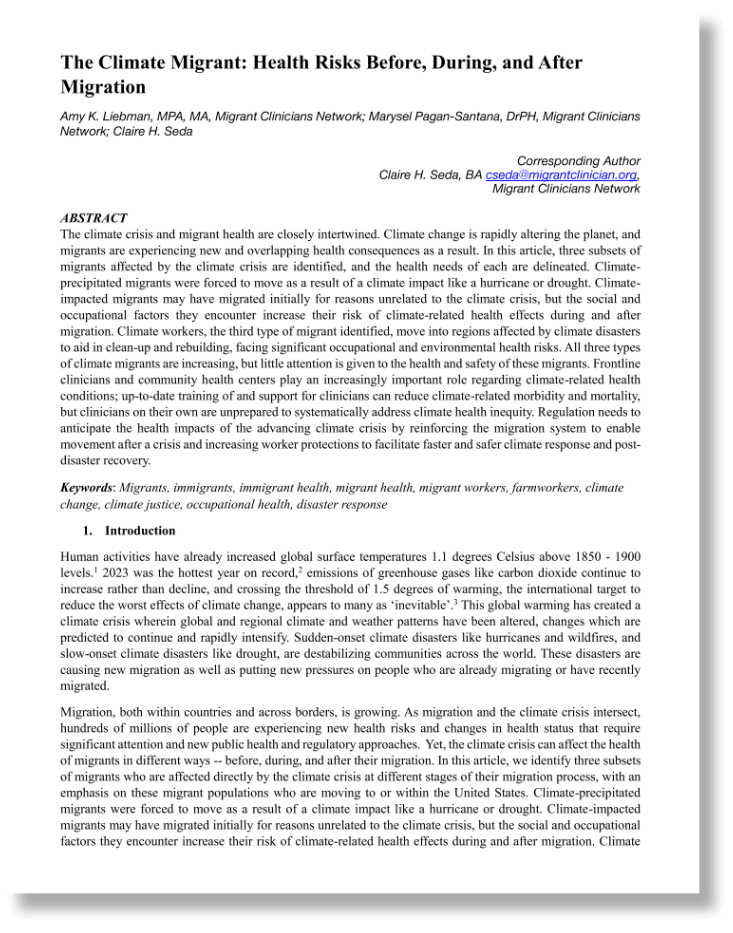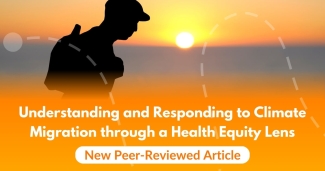Understanding and Responding to Climate Migration through a Health Equity Lens: New Peer-Reviewed Article

The climate crisis collides with migrant health at each stage of migration. In a new open-access article entitled “The Climate Migrant: Health Risks Before, During, and After Migration,” and published in the Journal of the National Hispanic Medical Association, Migrant Clinicians Network’s Amy K. Liebman, MPA, Marysel Pagan Santana, DrPH, and Claire Seda discuss the impact of the climate crisis before, during, and after migration. The authors conclude that to advance health equity as climate migration increases, both our health systems and national policy need to shift.
“’Climate migrant’ is a broad term, so in this article, we seek to specify how the climate crisis is affecting migration by identifying different types of climate migrants,” explained Amy Liebman, MPA, Chief Programs Officer of Workers, Environment, and Climate at Migrant Clinicians Network. “By better understanding the specific circumstances of different migrants, we can improve our clinical and policy approaches to protecting their health and increasing their access to health care, when needed.”
 The article identifies three primary groups of migrants. Climate-precipitated migrants decide or are forced to migrate because of a climate crisis. Climate-impacted migrants may not have initially begun their migration in response to a climate disaster or climate change consequence, but encounter climate-related social, health, or occupational risks during or after migration Climate workers, the third type of migrants identified in the article, move into regions that have been hit by a climate disaster to assist in clean-up, demolition, and rebuilding.
The article identifies three primary groups of migrants. Climate-precipitated migrants decide or are forced to migrate because of a climate crisis. Climate-impacted migrants may not have initially begun their migration in response to a climate disaster or climate change consequence, but encounter climate-related social, health, or occupational risks during or after migration Climate workers, the third type of migrants identified in the article, move into regions that have been hit by a climate disaster to assist in clean-up, demolition, and rebuilding.
The full article is available on the Journal of the National Hispanic Medical Association webpage. In this special issue focused on migration, Migrant Clinicians Network authors contributed two additional articles. One outlines the work of Migrant Clinicians Network as a clinical organization seeking health justice. The other offers a case study of Health Network, an award-winning program offering continuity of care for asylum seekers and migrants.
- Log in to post comments





